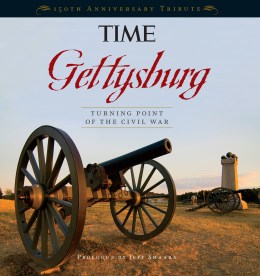
From the Dead, a Nation Reborn
And yet for all the horror, heartache and dismay, something new in the American experience would begin to arise from the fields of Gettysburg in the days, weeks and months following the battle. For nine months—since the Battle of Antietam, in September 1862, the bloodiest single day in American history—the inexorably rising death tolls of the war, the cumulative experience of mass death in America, had been exerting a powerfully transforming impact on American culture, at least in the North: on military strategy, on public policy, on the very definition of the war’s meaning and purpose; as if death itself, under certain circumstances, could take on an enormous generative power and creativity.
No formal policy or appropriation for burying the dead would emerge during the war itself. However, in 1862, as the death tolls soared, the U.S. Congress had passed measures granting the President and the War Department the power to purchase grounds near battlefields—on an emergency basis, as circumstance and public health concerns dictated.
But the burial ground that now began to take shape south of Gettysburg would go far beyond the practical needs of disposing of dead bodies. Soldiers and citizens; businessmen and military officers; and local, state and federal officials came together in an unprecedented collective action, one that would foreshadow and for the first time begin to embody a new sense of obligation and responsibility to the dead and a new sense of national purpose in the North—and would begin to suggest how a restored U.S. might eventually bind itself together again into a new American Republic, one with a past and a future, consecrated both to memory and to hope, a Republic of the living and the dead.
Not long after the battle—with financial help from every Northern state that had lost men in the engagement—a local lawyer named David Wills oversaw the purchase of 17 acres in the town, adjoining the existing private cemetery, which was soon taken over by the Federal Government. In October, contracts were let for the reburial of Union soldiers on the new ground, at the rate of $1.59 for each body.
On Nov. 19, 1863, a host of dignitaries from Boston, Philadelphia and Washington, including President Abraham Lincoln himself, journeyed to Pennsylvania to dedicate Gettysburg’s new Soldiers’ National Cemetery. Just a few months before, 7,000 corpses had lain strewn across the surrounding fields; even now still unburied coffins stood stacked nearby. Lincoln knew he was in a place of death. But his work was to give this intolerable sacrifice meaning, and in so doing explain the purposes of the war and, indeed, of the American nation.
Lincoln’s brief but soaring remarks—like the new burial ground itself at Gettysburg, with its rows of identical graves radiating symmetrically, and democratically, around the cemetery’s central focus—marked a seismic shift in governmental attitude and policy toward the dead. The President’s words affirmed that the dead were no longer simply the responsibility of their families, but rather that the deceased, and their loss, and their meaning, belonged to the entire nation.
The address—what the historian Garry Wills called “the words that remade America”—was nothing less than a prescription for civic rebirth, a call for a kind of collective transubstantiation of the American body politic, one that urgently stressed the steps the nation and its citizens must take so that the deaths on the battlefield might not have been in vain but have meaning and purpose; such that death, in short, might be transformed into life, not in a religious sense but in a political sense: deaths incurred that a nation might live; a redefining of the nation’s future as being tied to the deaths that had secured it.
“These honored dead” had died “that a nation might live.” In their honor, this nation must now ensure “a new birth of freedom” and the survival of that form of government Lincoln had elsewhere described as “the last, best hope of earth”: a government “of the people, by the people, for the people.” The President’s words transformed the loss of death into the immortality of a redeemer nation. The price paid by the Gettysburg dead required not just that the unfinished work of the war be completed but also that it be dedicated to the cause of equality and freedom, which would consecrate their sacrifice by ensuring its transcendent purpose.
Gettysburg presented the nation with a roll of death and a landscape of carnage unlike any it had either experienced or imagined. But it also redefined the meaning of death in the nation’s service and the purposes of the nation itself. We still live in the world those who died at Gettysburg created for us, with the work of freedom and equality to which they gave their lives still unfinished.
To mark the 150th anniversary of the battle of Gettysburg, TIME has published a richly illustrated 192-page book, Gettysburg: Turning Point of the Civil War. To buy a copy, go to time.com/gettysburgbook






